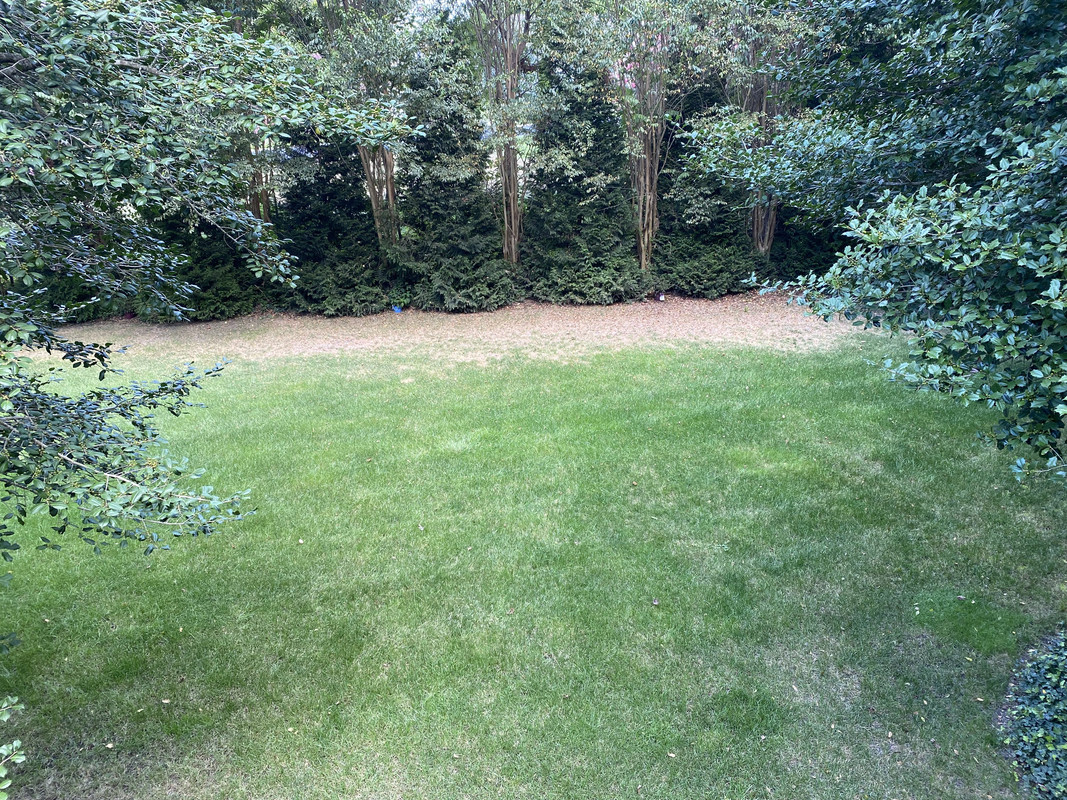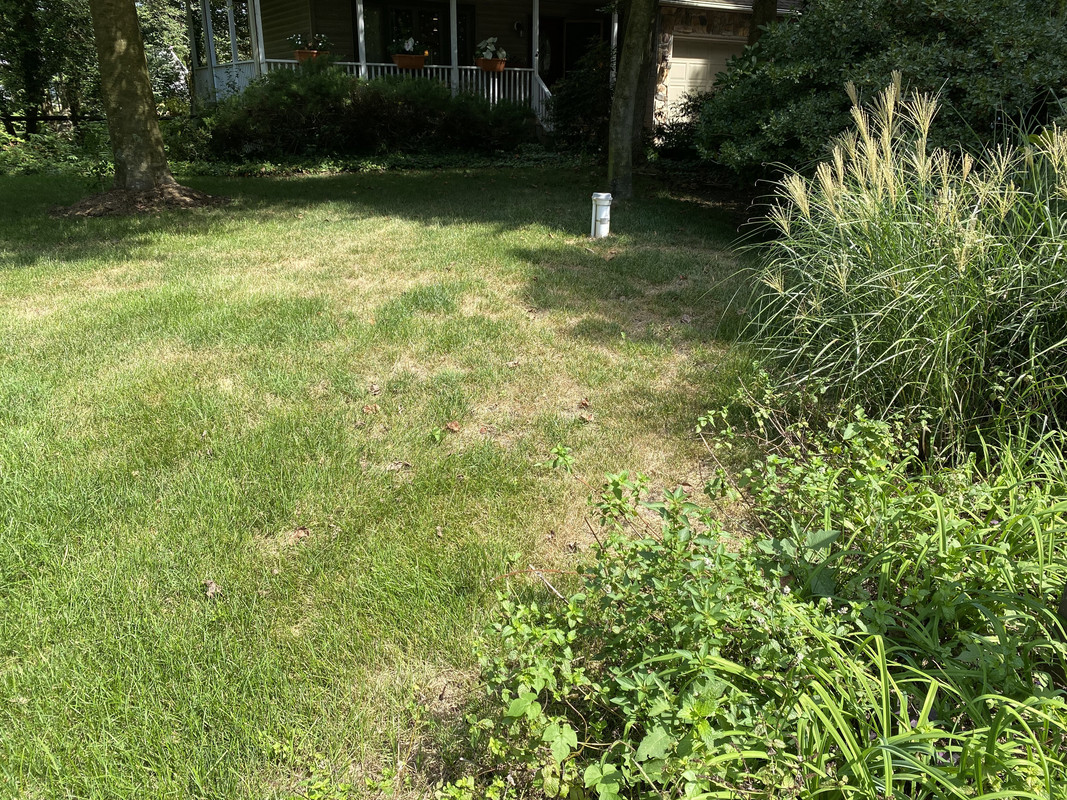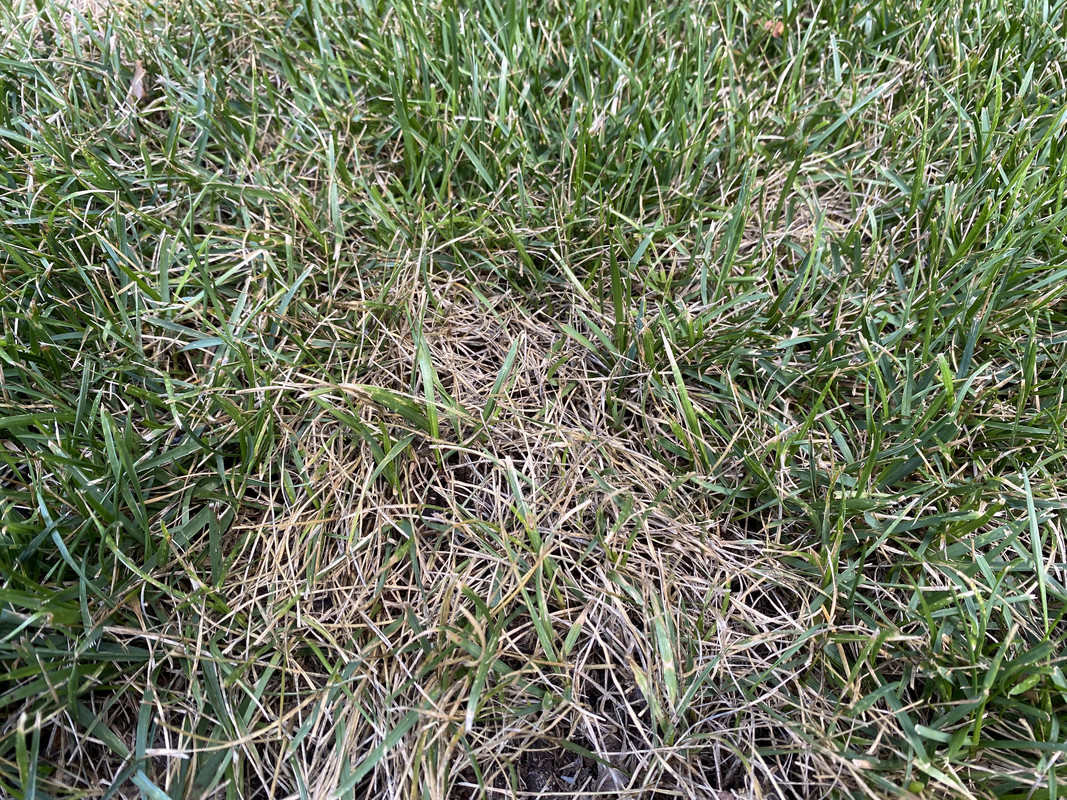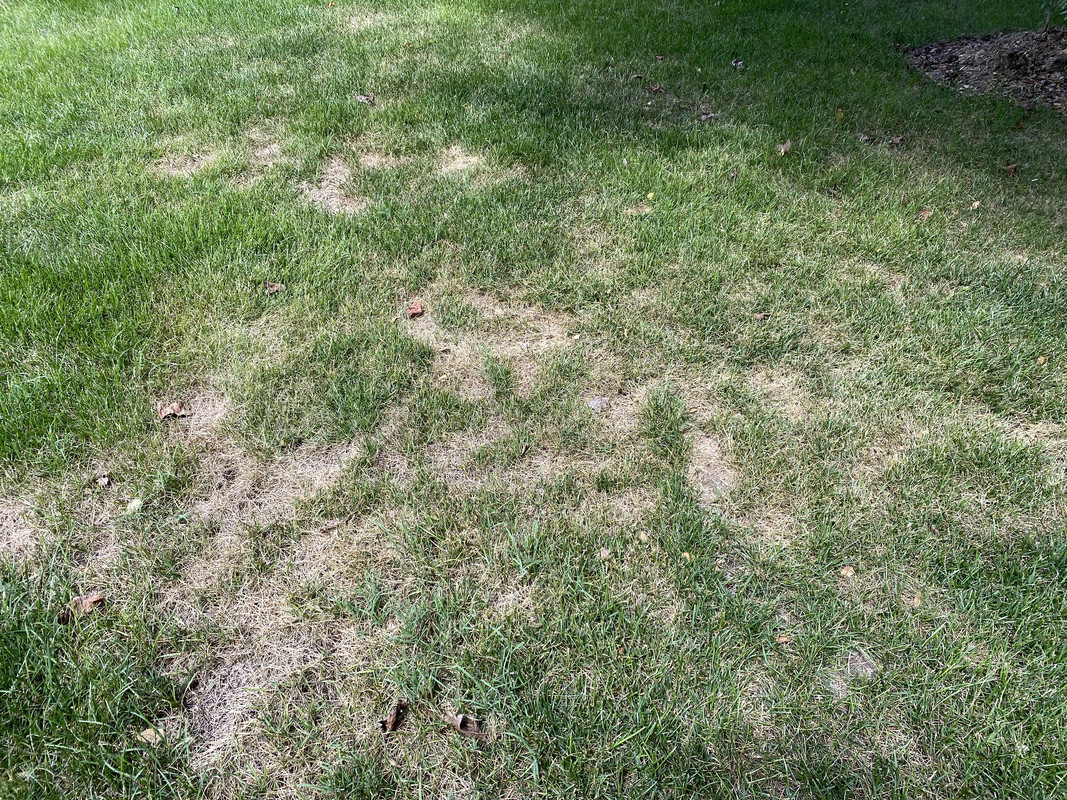This summer has been a huge challenge for me in Delaware. We've had very little rainfall, and while my irrigation system has been working, my fescue is looking terrible with die offs in many places. I'm at a loss for what could be driving this, as I applied insect control in late spring and late June, preventative fungicides in May, late June, and July (mixed types to avoid resistance). I've followed a similar schedule in other years to good success. It seems like this is due to disease, as I can see the green blades yellowing and turning brown, often from the tops of the blades.
Could I have still not been watering enough? The soil in several bad spots does still seem dry, so I'm wondering if I was too cautious with the irrigation.
I put a ton of work into aeration, overseeding and top dressing last fall and things looked so good in the spring / early summer. I don't have time to attack it this fall, so I'm feeling very discouraged and wonder if I should at least try to rake up the dead stuff, loosen the soil and overseed again.
Could I have still not been watering enough? The soil in several bad spots does still seem dry, so I'm wondering if I was too cautious with the irrigation.
I put a ton of work into aeration, overseeding and top dressing last fall and things looked so good in the spring / early summer. I don't have time to attack it this fall, so I'm feeling very discouraged and wonder if I should at least try to rake up the dead stuff, loosen the soil and overseed again.









